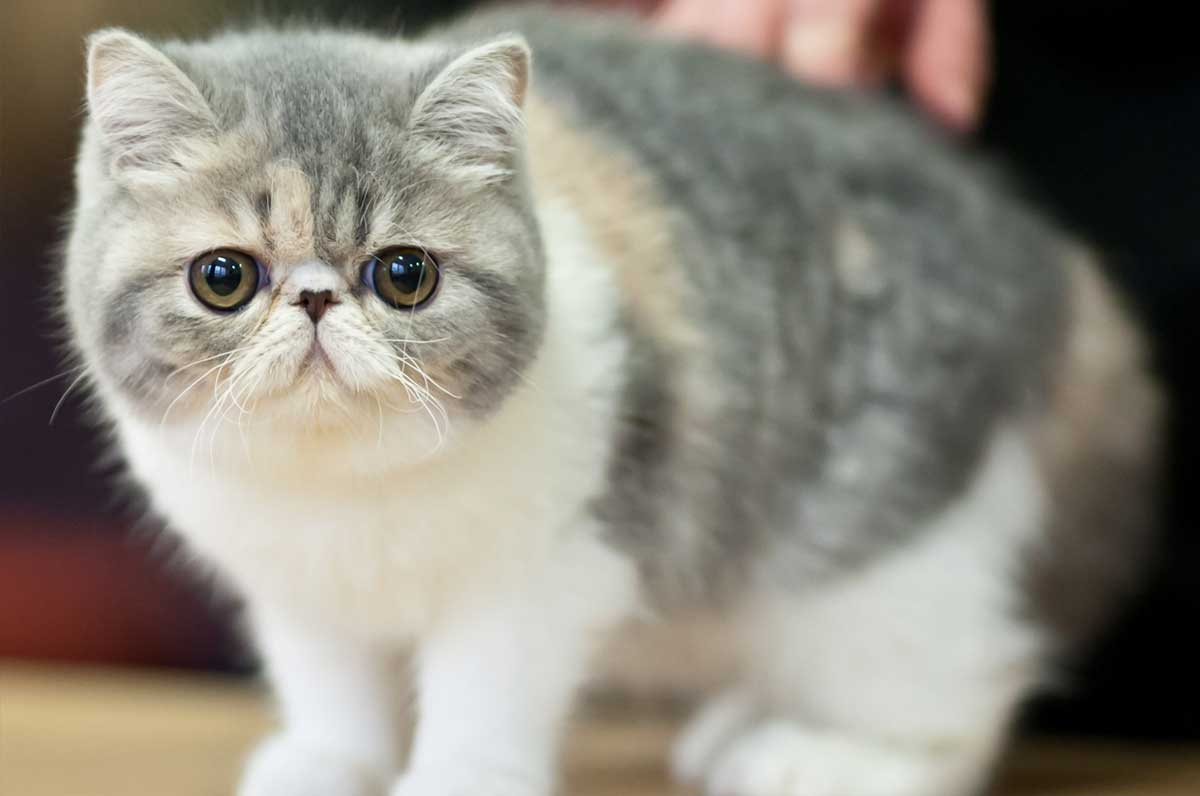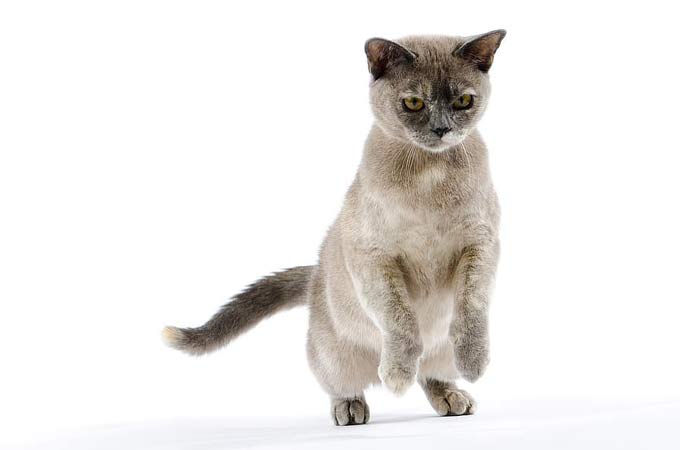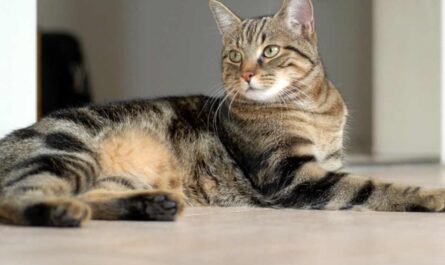What smells do cats hate? It might astonish you to discover the extraordinary olfactory prowess that your feline companion possesses. While certain odors might merely register as mildly unpleasant to you, these olfactory nuances take on a different dimension for your cat. The olfactory landscape for cats is a realm of heightened intensity, where scents, both pleasing and repulsive, trigger responses far more intricate and pronounced than our own. Understanding the olfactory dislikes of your feline friend becomes imperative, steering you away from investing in that pricey lavender-scented cat litter or impulsively purchasing a new orange blossom candle. In the following paragraphs, Cat in a Flat will delve into the intricacies of your cat’s sense of smell and unravel the mystery of the most common smells that cats despise.
How strong is your cat’s sense of smell?
Ever wondered about the sheer potency of your cat’s sense of smell? It serves as the primary navigational tool in their world, an intricate system for identifying people, objects, and the nuanced spectrum of odors that envelop their surroundings. Whether engaged in the pursuit of delectable treats, detecting the presence of an unfamiliar feline intruder in the neighborhood, or expressing disdain for an offensive litter tray, your cat’s olfactory sense emerges as a fundamental aspect of their existence. Notably, this sense is not only pivotal but also remarkably sensitive, eclipsing human olfactory capabilities by a staggering factor of 9 to 16 times. To provide a comparative perspective, while humans boast a modest 5 million odor sensors in their noses, Mr. Whiskers boasts a staggering 200 million!
Discerning Odors: A Feline Art Form
The intricacies of your cat’s olfactory experience extend beyond mere sensitivity; they delve into the realm of an art form. Each sniff is a masterful stroke on the canvas of their perception, unraveling layers of information about their environment. From the tantalizing aroma of a potential treat to the unsettling whiff of a new cat on the block, every scent holds a narrative for your feline companion. Their olfactory prowess is not just a tool for survival but a rich tapestry woven with threads of curiosity, instinct, and discernment. Consequently, as a responsible cat owner, deciphering the code of smells that your cat finds disagreeable becomes a crucial aspect of ensuring their well-being and contentment.
Navigating the Odor Minefield: What Cats Dislike
Armed with this newfound understanding of your cat’s olfactory acumen, let’s unravel the mystery of the smells that trigger disdain in our feline friends. The choices we make in the scents we introduce into their environment can significantly impact their mood and behavior. Investing in cat litter exuding the wrong fragrance or adorning your living space with candles emitting odors offensive to their delicate senses can lead to unintended consequences. As we delve into the common olfactory aversions of cats, you’ll gain insights that go beyond mere preferences, offering a roadmap to create an olfactory haven that aligns with your cat’s unique sensitivities.
Does your cat hate how dogs smell?
The entrenched rivalry between feline and canine companions has long been a subject of speculation, with many proudly aligning themselves as either ‘cat people’ or ‘dog people.’ Contrary to the widespread notion of inherent animosity between cats and dogs, the crux lies in the feline aversion to change. Cats, creatures of habit, exhibit wariness towards any novel additions to their familial sphere, whether it be another cat, a dog, a diminutive creature, or even a new human presence.
What scents do cats hate the most?
The olfactory landscape of feline aversions is as diverse as the individuality that defines each cat. However, a consensus emerges, revealing a collective disdain for certain scents. Among the olfactory offenders are the zesty notes of citrus fruits, the putrid undertones of decaying edibles, the sharpness of peppermint, the robust aroma of coffee, and the acrid tang of vinegar. Beyond these, idiosyncratic preferences may manifest, with some cats exhibiting an antipathy towards the scent of other feline counterparts or certain human odors.
What scents do cats hate to keep them from scratching?
In the battle against feline furniture vandalism, a weapon of choice emerges in the form of citrus scents, universally despised by our four-legged friends. Crafting a homemade deterrent becomes an artful endeavor involving lemons and orange peels. The alchemy begins by submerging these aromatic peels in hot water, orchestrating a simmering symphony that lasts for 20 minutes.
Once cooled to a strategic temperature, the concoction is meticulously strained and funneled into a spray bottle, poised to repel feline mischief. Alternatively, an elixir of equal parts water and apple cider vinegar materializes as a formidable adversary against scratching proclivities. It’s a careful dance, though, as the volatile realm of essential oils is eschewed, recognizing their perilous implications for the feline constitution.
What scents do cats hate that will make them stop pooping in an area?
The endeavor to dissuade felines from inappropriate bathroom behaviors delves into an aromatic arsenal. Pepper, with its pungent kick, assumes a frontline position, alongside the zesty trifecta of lemon, grapefruit, or lime peel. However, the unsung hero in this olfactory odyssey is white vinegar, celebrated for its dual virtues of non-toxicity and efficiency. Its deployment as a deterrent is both safe and ecologically conscientious.
Yet, the path to rectifying wayward litter box behaviors is nuanced, acknowledging that vinegar, while a stalwart ally, stands alone as insufficient. In the quest for a holistic solution, the sage counsel of a veterinary professional or a cat behaviorist is summoned, unraveling the enigma of feline motivations and ensuring the provision of an environment conducive to feline hygiene.
How to avoid smells your cat hates?
Navigating the olfactory sensitivities of our feline friends requires a nuanced approach, recognizing that cats, contrary to a universal disdain for the scent of dogs, respond uniquely to their environment. The introduction of a new canine companion demands a measured and deliberate process, acknowledging the feline proclivity for a gradual adaptation to change. Rushing this delicate assimilation may precipitate a sense of overwhelm or distress in your cat.
In the quest to create a harmonious olfactory ambiance for your feline companion, it becomes paramount to consider and mitigate potential sources of displeasure. While it may be an impossible feat to entirely circumvent every odor that irks your cat, there exist pragmatic strategies to accommodate their sensitive noses.
- Avoid strong fragrances: Steer clear of potent perfumes or overwhelming essential oils, as these can elicit an adverse response from your discerning feline. If your cat seems to shy away after your olfactory enhancement, it might be prudent to opt for a lighter scent or forgo it altogether.
- Exercise caution with essential oils: Beyond being potentially toxic if ingested, essential oils can be a source of irritation for cats. Treading carefully with these aromatic substances is crucial to maintaining feline well-being.
- Embrace natural and unscented alternatives: Opting for natural cleaning products or items devoid of artificial scents can be a subtle yet effective way to create an environment conducive to feline comfort. Eschewing strongly scented cleaning products, particularly those with lemon fragrances, can contribute to a more cat-friendly abode.
- Mindful cat-sitting practices: For cat sitters, the onus lies in practicing meticulous hygiene to prevent the inadvertent transfer of unsettling scents. Thorough handwashing before and after visits is paramount, especially when encountering a new feline acquaintance, ensuring a clean slate devoid of potentially distressing odors.
In essence, each feline is a unique entity, with individual aversions influenced by personality, past experiences, and socialization. Patience and a tailored approach are key in deciphering and addressing your cat’s specific olfactory preferences, fostering an environment where they can truly feel at ease.
What Smells Do Cats Hate: Unveiling Their Olfactory Aversions
Felines, with their discerning olfactory senses, exhibit a fascinating array of dislikes when it comes to scents. From the ubiquitous banana to the robust aroma of coffee, these whiskered connoisseurs crinkle their noses at the overpowering fragrance. The essence of banana, while delightful to many, sends feline olfactory receptors into a frenzy of displeasure. The rich, roasted notes of coffee, a source of human comfort, paradoxically repel our feline friends, revealing the intriguing complexity of their sensory preferences.
Unpleasant Whiffs: The Offense of Odorous Litter Boxes
In the feline world, nothing is more offensive than a dirty litter box. The pungent odors emanating from neglected litter not only disturb human sensibilities but also trigger an acute aversion in cats. The importance of maintaining a pristine toilet space for our feline companions becomes evident as their sensitive noses revolt against the unpleasant stench. It serves as a testament to the meticulous nature of these creatures who demand cleanliness even in the most private corners of their existence.
Fragrant Repellents: Lavender, Vinegar, and Essential Oils
The sweet floral notes of lavender, often revered for their calming effects on humans, transform into a source of repulsion for cats. Similarly, the tangy acidity of vinegar, a versatile household staple, registers as an olfactory offense in the feline realm. Essential oils, celebrated for their therapeutic properties, can be a cacophony of unpleasantness for cats, unraveling a paradox where what is soothing for one species is irksome for another.
Arboreal Antipathy: Pine, Cedar, and Rosemary
The aromatic allure of pine and cedar, reminiscent of the great outdoors, holds a different narrative for our feline companions. Instead of evoking images of pristine forests, these scents become agents of discomfort for cats. Even the earthy and herbaceous fragrance of rosemary, celebrated in culinary endeavors, falls under the feline olfactory blacklist, showcasing the idiosyncrasies of their sensory aversions.
Social Dynamics in Scents: Other Cats and Intricate Hierarchies
In the intricate world of feline social dynamics, scents play a pivotal role. The aroma of other cats, while an intricate part of their social communication, can also be a source of discomfort. Cats, territorial by nature, navigate a complex olfactory landscape where the presence of a rival’s scent can provoke a visceral reaction, revealing the nuanced interplay of olfaction in feline social hierarchies.
Household Hazards: Cleaners, Deodorants, and Menthol
The arsenal of household cleaners, laden with chemical fragrances designed for human approval, often clashes with feline olfactory preferences. Deodorants, a daily indulgence for humans, carry an olfactory stigma for cats, disrupting the harmony of shared living spaces. The cool, minty notes of menthol, though invigorating to us, can be a source of perplexity for our feline companions, highlighting the divergent olfactory landscapes that coexist within a shared environment.
Herbal Anomalies: Rue, Thyme, Cinnamon, and Curry
The herbaceous notes of rue and thyme, often celebrated in human culinary endeavors, take an unexpected turn when it comes to feline olfactory perception. Even the warm, comforting aromas of cinnamon and curry, staple spices in human kitchens, can be jarring to the delicate noses of our feline friends. The culinary delights that tantalize human taste buds become aromatic anomalies, unraveling the intricate interplay between human and feline olfactory worlds.
The Culmination of Aversions: Strong Perfumes and Fragrances
In a symphony of scents, the crescendo of aversion for cats often reaches its peak with strong perfumes and fragrances. While humans indulge in these olfactory symphonies as expressions of personal style, cats perceive them as overwhelming assaults on their delicate senses. The clash between human adornment and feline aversions serves as a poignant reminder of the diverse olfactory landscapes that coexist within shared living spaces.
Why Your Cat’s Sense Of Smell Matters To You?
Understanding the intricate nuances of your feline companion’s olfactory prowess is not merely an exercise in feline anthropology; it’s key to ensuring the felicitous comfort of your whiskered friend. Cats, being veritable maestros of olfaction, deploy their acute sense of smell in a myriad of behaviors. From the delicate sniffing of their food, an olfactory prelude to culinary satisfaction, to the ritualistic inhalation of the hand of an impending human confidant, felines navigate their world through the olfactory kaleidoscope. In the aromatic tapestry of their surroundings, cats discern the symphony of scents, delineating between the pleasant and the aversive, the significant and the inconsequential.

What Smells Do Cats Hate: 34 Scents You Must Avoid
- Banana
- Pennyroyal
- Cats and smell
- Cinnamon
- Coleus
- Curry
- Coffee
- Essential oils
- Eucalyptus
- Pepper
- Chili Powder
- Pine and cedar
- Rue
- Mothballs
- Grapefruit
- Rosemary
- Dirty litter box
- Coleus canina
- Lavender
- Vinegar
- Ammonia
- Marigolds
- Mint
- Other cats
- Citrus
- Cleaners
- Pine
- Bad Fish
- Deodorants
- Geranium
- Menthol
- Rue
- Thyme
- Strong perfumes and fragrances
Biology Behind A Cat’s Sense Of Smell
The olfactory prowess of our feline companions is a symphony of biological marvels, delving into the intricate labyrinth of their nasal anatomy. Unlike the relatively muted olfactory landscape of humans, cats wield a sensory artillery that is nothing short of extraordinary, a staggering nine to 16 times more potent than our own. This heightened olfactory sensitivity is orchestrated by specialized scent receptors, strategically stationed on the olfactory epithelium nestled within the nasal recesses of their sophisticated nostrils.
The anatomical grandeur of a cat’s nasal apparatus extends further as we scrutinize the dimensions of their nasal lining. A whopping 20 square centimeters of olfactory real estate adorn the feline nasal cavities, eclipsing the meager 4 square centimeters allocated to their human counterparts. Within this expanse, an army of approximately 200 million olfactory receptors stands at the ready, dwarfing the paltry 5 million deployed in the human nasal arsenal.
Adding a nuanced layer to this olfactory saga is the clandestine vomeronasal organ, colloquially christened Jacobson’s organ. Nestled at the regal perch of the cat’s oral landscape, this organ assumes the role of a scent connoisseur, a bespoke apparatus attuned to the nuances of pheromones. It becomes an exquisite sensor, unraveling the cryptic language of chemical cues exuded by fellow felines, a testament to the depth and sophistication of their sensory apparatus.
Now, armed with a profound understanding of the feline olfactory opulence, we embark on a journey to unravel the aromatic tapestry that elicits disdain in our discerning companions.
Cats and Their Sensory World
Unlike humans, who rely heavily on visual stimuli, cats navigate the world primarily through their acute sense of smell. This olfactory prowess is not just a whimsical aspect of feline behavior but a fundamental guide in their daily lives. The rich tapestry of scents woven into their surroundings is a symphony of information that shapes their perceptions and responses.
The Intricate Olfactory Realm of Cats
Domestic felines, in their seemingly languid existence, are diligent assessors of olfactory and chemical cues. These sensory signals become the bedrock upon which they build evaluations of security and familiarity. Whether it’s the presence of humans, the nature of surrounding objects, or the allure of food, cats deftly decipher the olfactory code that weaves through their habitat.
Dynamic Responses to Scents
A fascinating facet of feline olfaction is the fluidity of their responses to scents. The same aroma, encountered at different times, can elicit disparate reactions. Moreover, the idiosyncrasies of individual cats come to the forefront as different felines may respond divergently to identical odors. This intricate dance of scent perception adds a layer of complexity to the already enigmatic world of feline behavior.
The Role of Smell in Feline Gastronomy
For cats, the sense of smell is not merely a tool for navigating their environment; it’s a gastronomic guide. They employ this keen sense to discern the freshness of their food, relying on olfaction as a critical factor in their culinary decision-making process. In understanding the role smell plays in their daily sustenance, we gain insights into the profound ways in which cats interact with their surroundings.
The Unseen Influence of Household Elements
It’s crucial to recognize that our feline companions are not immune to the influence of household elements. Scented litter, intended for our convenience, might inadvertently repel a cat from using the litter box. Similarly, the pervasive aroma of strong household chemicals can trigger anxiety and distress in our furry friends. This underlines the importance of considering their olfactory sensitivities in maintaining a cat-friendly environment. Cat accessories on Amazon
A Cat’s Survival Instincts and Odor Awareness
In the wild, where survival hinges on acute instincts, a cat’s ability to detect odors from considerable distances is nothing short of astonishing. This finely tuned sense of smell is not a mere quirk but a survival necessity. Understanding the scents that cats detest becomes a crucial aspect of harmonizing their living spaces with our preferences, safeguarding their well-being, and ensuring a natural deterrent from undesirable locations.
What You Can Do About Your Cat’s Sense Of Smell?
In the intricate ballet of feline olfaction, your role as a custodian of the cat kingdom involves a delicate choreography of scents. Foremost, steer clear of the olfactory overtures that cats find discordant. The pungency of scents that rank low on the feline olfactory appreciation scale should be meticulously avoided. Air fresheners, cleaning products with an olfactory punch, paint fumes, perfumes, and the wafting tendrils of oil and reed diffusers—all wield the potential to disrupt the harmonious olfactory tapestry your cat has meticulously woven.
Respect becomes the watchword in your olfactory stewardship. Recognize that your cat utilizes its sense of smell as a compass of safety and well-being within the confines of your shared abode. Hence, the sanctity of their home scent map should be preserved. Stepping through the front door should not herald an influx of foreign smells; outdoor shoes, carriers of myriad olfactory tales, should linger at the threshold, ensuring that the cat’s sense of security remains unwavering. See why thousands of cats love BoxCat
Introducing novelties demands finesse. Before ushering new items into the cat’s realm, a spritz of Feliway, an olfactory ambassador of calm, can preemptively assuage feline distress. This nuanced approach ensures that the introduction of novel scents is orchestrated with the finesse befitting a feline connoisseur, minimizing potential upheavals in the olfactory landscape and, consequently, the tranquility of your cat’s kingdom.
Other Interesting Articles
- Cornish Rex Cat Breed: Profile, Traits, Health, Grooming, Care
- Colorpoint Shorthair Cat Breed: Profile, Traits, Grooming, Care
- Cheetoh Cat Breed: Profile, Traits, Health, Grooming, Care
- Chausie Cat Breed: Profile, Traits, Health, Grooming, Care
- Chartreux Cat Breed: Profile, Traits, Health, Grooming, Care
- Chantilly, or Tiffany Cat Breed: Profile, Traits, Grooming, Care
- Cymric Cat Breed: Profile, Traits, Health, Grooming, Care
- Dragon Li Cat Breed: Profile, Traits, Health, Grooming, Care
- Donskoy Cat Breed: Profile, Traits, Health, Grooming, Care
- European Shorthair Cat: Profile, Traits, Health, Grooming, Care
- German Rex Cat Breed: Profile, Traits, Health, Grooming, Care
- Havana Brown Cat Breed: Profile, Traits, Coats, Groom, Care
- Kurilian Bobtail Cat Breed: Profile, Traits, Coats, Groom, Care
- Korat Cat Breed Profile: Health, Traits, Coats, Groom, Care
- Javanese Cat Breed Profile: Health, Traits, Coats, Groom, Care
- Japanese Bobtail Cat Profile: Health, Traits, Coats, Groom, Care
- LaPerm Cat Breed Profile: Health, Traits, Coats, Groom, Care
- Manx Cat Breed Profile: Health, Traits, Coats, Groom, Care
- Nebelung Cat Breed Profile: Health, Traits, Groom, Care
- Norwegian Forest Breed Profile: Health, Traits, Groom, Care




